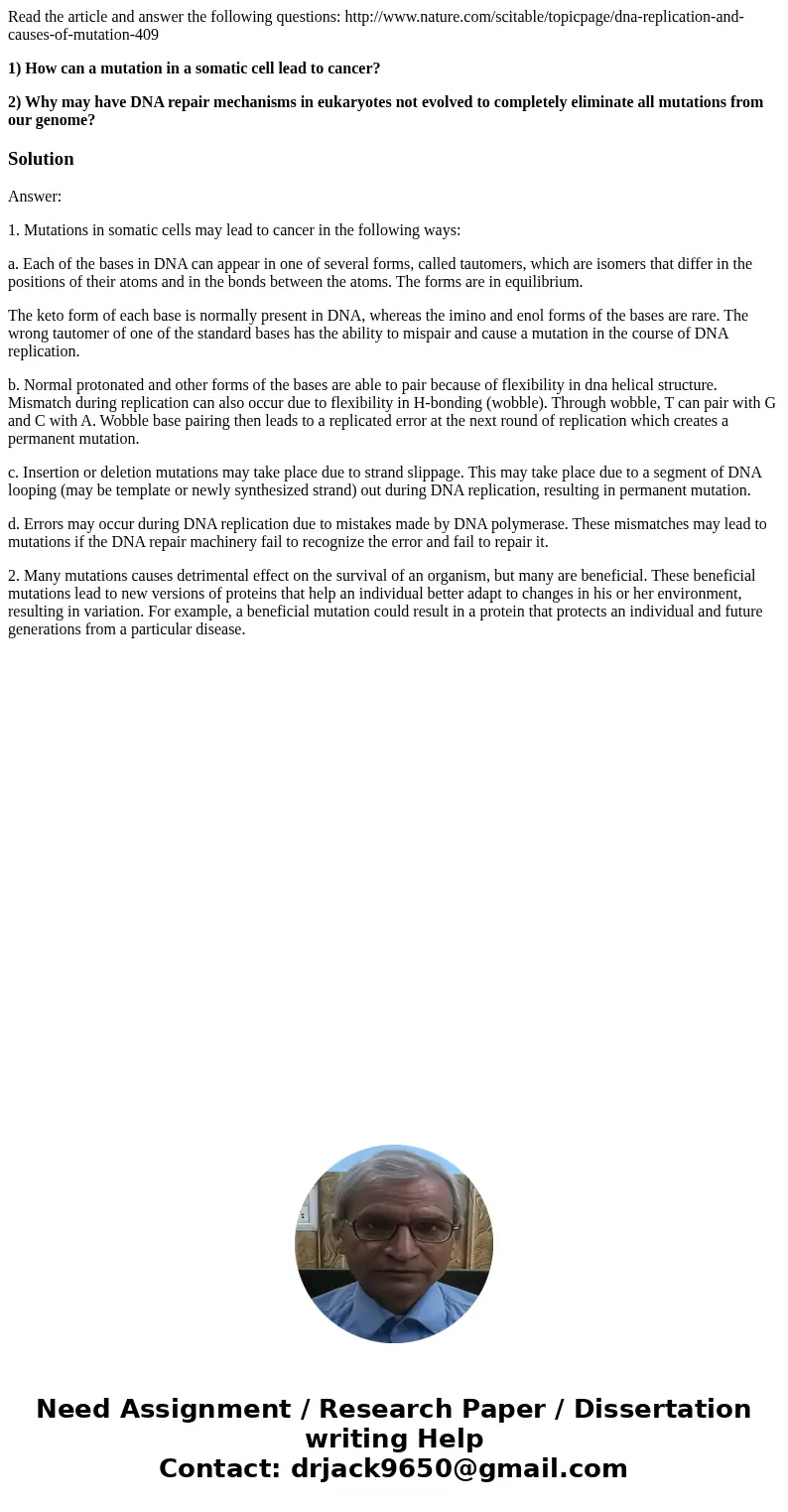Read the article and answer the following questions httpwwwn
Read the article and answer the following questions: http://www.nature.com/scitable/topicpage/dna-replication-and-causes-of-mutation-409
1) How can a mutation in a somatic cell lead to cancer?
2) Why may have DNA repair mechanisms in eukaryotes not evolved to completely eliminate all mutations from our genome?
Solution
Answer:
1. Mutations in somatic cells may lead to cancer in the following ways:
a. Each of the bases in DNA can appear in one of several forms, called tautomers, which are isomers that differ in the positions of their atoms and in the bonds between the atoms. The forms are in equilibrium.
The keto form of each base is normally present in DNA, whereas the imino and enol forms of the bases are rare. The wrong tautomer of one of the standard bases has the ability to mispair and cause a mutation in the course of DNA replication.
b. Normal protonated and other forms of the bases are able to pair because of flexibility in dna helical structure. Mismatch during replication can also occur due to flexibility in H-bonding (wobble). Through wobble, T can pair with G and C with A. Wobble base pairing then leads to a replicated error at the next round of replication which creates a permanent mutation.
c. Insertion or deletion mutations may take place due to strand slippage. This may take place due to a segment of DNA looping (may be template or newly synthesized strand) out during DNA replication, resulting in permanent mutation.
d. Errors may occur during DNA replication due to mistakes made by DNA polymerase. These mismatches may lead to mutations if the DNA repair machinery fail to recognize the error and fail to repair it.
2. Many mutations causes detrimental effect on the survival of an organism, but many are beneficial. These beneficial mutations lead to new versions of proteins that help an individual better adapt to changes in his or her environment, resulting in variation. For example, a beneficial mutation could result in a protein that protects an individual and future generations from a particular disease.

 Homework Sourse
Homework Sourse